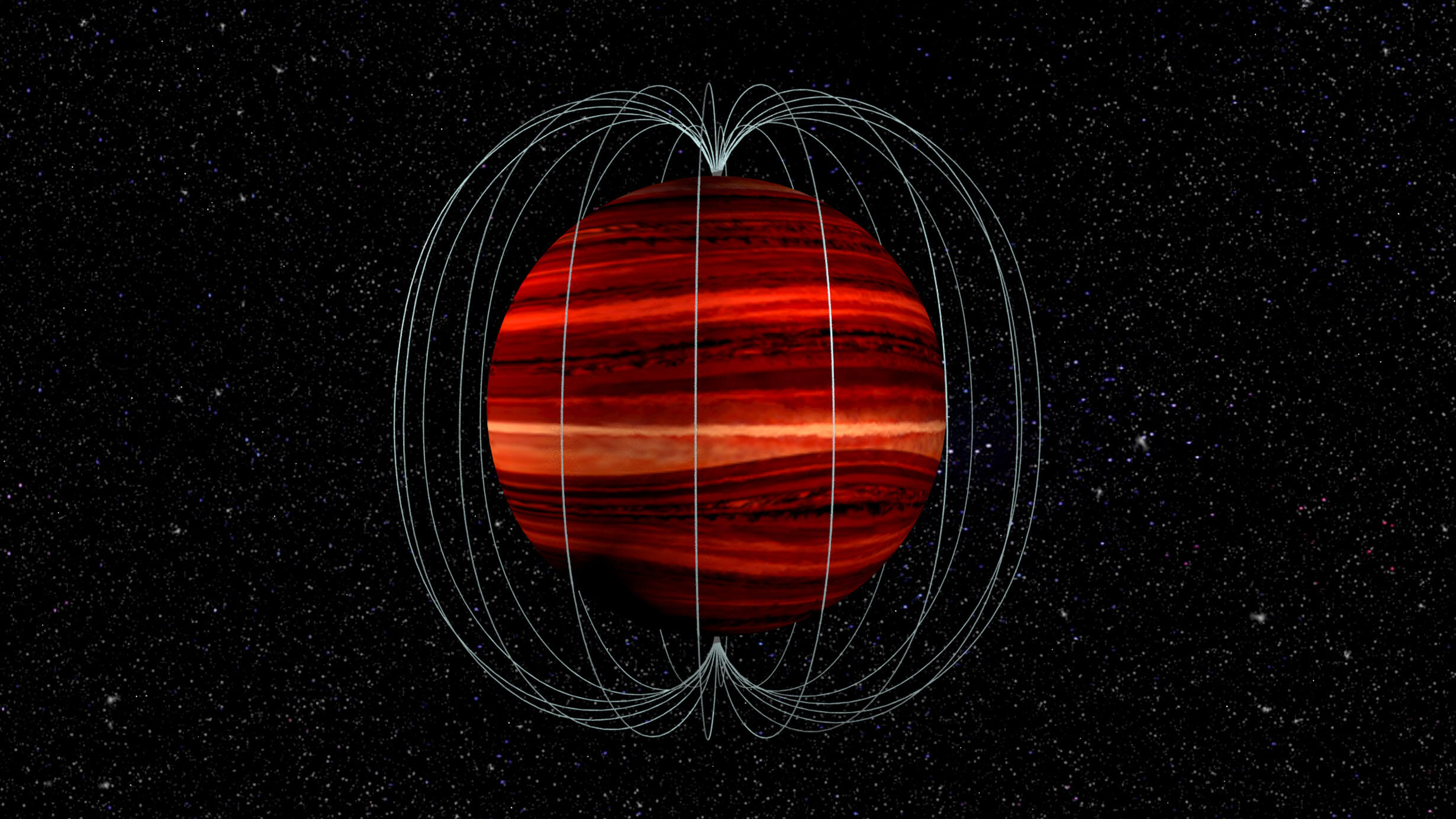 Artist's conception of a brown dwarf and its magnetic field. The magnetic field, rooted deep in its interior, rotates at a different rate than the top of the atmosphere. The difference allowed astronomers to determine the object's wind speed.
Artist's conception of a brown dwarf and its magnetic field. The magnetic field, rooted deep in its interior, rotates at a different rate than the top of the atmosphere. The difference allowed astronomers to determine the object's wind speed.A team of scientists including Museum postdoctoral research fellow Johanna Vos is the first to measure wind speed on a brown dwarf, a so-called “failed star.”
Brown dwarfs, which are spread throughout the Milky Way, lack enough mass to sustain stable nuclear fusion, but they are hot enough to glow brightest in the infrared range of the light spectrum. The study, led by Bucknell University Physics and Astronomy Professor Katelyn Allers, used a new technique to study a “cool” brown dwarf—an object in space occupying the mass range between the heaviest gas giant planets and the lightest stars. Named 2MASS J1047+21, the brown dwarf is 33.2 light years from Earth. The researchers measured a wind speed of a whopping 650 meters per second (1,450 miles per hour).
“This is not just the first measurement of wind speed on a brown dwarf, but the first time wind speed has been measured on a cool object outside of our solar system,” Vos said.
Using NASA’s recently decommissioned Spitzer Space Telescope, the researchers looked for changes in the brown dwarf’s brightness to determine the rate at which its atmosphere is rotating. They then compared that to the interior rotation rate of the brown dwarf, which they determined with radio data from the Karl G. Jansky Very Large Array. The difference reveals how fast the wind is blowing.
The team’s technique, which is published this week in the journal Science, could allow other researchers to better understand the physics of the atmospheres outside of the solar system.